Lea Wait's Blog, page 19
March 2, 2025
Paring Down the Prose
 Kaitlyn Dunnett/Kathy Lynn Emerson here, today sharing some examples of what I do when I revise the mysteries in my Face Down series and its spinoff, the Mistress Jaffrey series, both set in Elizabethan England.
Kaitlyn Dunnett/Kathy Lynn Emerson here, today sharing some examples of what I do when I revise the mysteries in my Face Down series and its spinoff, the Mistress Jaffrey series, both set in Elizabethan England.
First off, I have to admit that it’s possible this has just been make-work to keep myself occupied in my semi-retirement. After all, these are all books that were purchased and published by traditional publishers and they all received good reviews when they first came out. Still, when I started rereading them in preparation for reissuing them in trade paperback format, I found a whole lot of things that I wanted to change. It isn’t that the originals were bad. It’s just that with the benefit of more experience as a writer, I saw ways they could be better.
So, here’s how it went on the most recent revision, Murder in the Merchant’s Hall, the second Mistress Jaffrey mystery, to be released in trade paperback and e-book formats in early April.
First priority was to catch typos, a real challenge since every time I make a correction I’m apt to insert a new mistake. Arthritic fingers don’t help. What does is doing two complete reads, one of a printout and the second, after the changes are made to the .doc file, on my iPad. I allowed about a month between reads to increase my chances of catching errors.
All in all, there weren’t too many and they tended to be things like a missing letter or an extra one—stared instead of stare; ears instead of years. Did I miss one or two? Probably. The little devils are sneaky, but the book now has as few or fewer than any commercially published novel out there.
I’ve written about commas before, so I won’t repeat that here, but I did make a few changes, and I’ve tried to be consistent about using Oxford commas for clarity.
One thing I paid particular attention to was overuse of some words. “Own” showed up multiple times: “Forced to examine her own motives, she came to a startling conclusion.” Most of those owns were unnecessary.
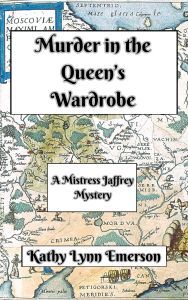
release date is this Thursday
Repetition in general is something I try to avoid. A garden seat that is covered in turf didn’t need to be referred to as turf-covered every time it was mentioned. More insidious were cases where the same word ended up being used several times on the same page. Readers don’t see “said” but others stand out. So do characters’ tendencies to smile, sigh, frown, and so on, especially if they keep doing it. Sometimes I substituted other words. Other times I cut unnecessary repetition entirely.
I caught some odd pronoun references. For example, “When Walkenden set it aside, she sagged against him in relief.” makes you think it’s Walkenden she sags against. It is not, and in that case the easiest fix was to omit a couple of words, making it read “When Walkenden set it aside, she sagged in relief.” Elsewhere inserting a name instead of “him” (or “her”) cleared up any confusion.
Since these are historical mysteries, I was on the lookout for anachronisms when I originally wrote them. On rereading there were a few places where I had to check again. “Brat,” for instance, struck me as too modern, even though it was in use by the middle of the sixteenth century. I deleted it. In another scene, a character wore a carnation-colored garment. The word carnation is fine (also in use by 1550) but this time around it struck me that carnations come in more than one color. I deleted that, too.
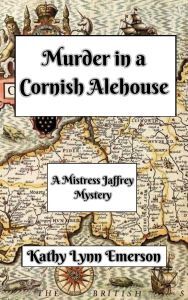
next up for revising
In some places I ended up rewriting a paragraph or two. In one case, even though two scenes were only about thirty pages apart, by the time I got to the second scene where my protagonist, Rosamond, sees Tommaso, I couldn’t remember if she actually knew who he was in the first scene. If I couldn’t be sure, my readers might also need a reminder.
Here’s the way their second encounter originally read:
It was a picturesque pose. The short length of his dusky orange doublet showed his long, lean limbs to advantage. Rosamond frowned. Had he somehow learned she was looking for him? At least one embassy servant was aware she had asked for him on her last visit to Salisbury Court.
Deciding that it scarce mattered, she continued in his direction. This was the opportunity she had hoped for and she was determined to take full advantage of it. With Alys trailing after her, she marched up to the entrance to the arbor and stopped there, blocking Tommaso’s view.
“Good day to you Master Sassetti,” she said. “I am Rosamond Jaffrey, one of Lina Walkenden’s friends.”
Revised, the scene reads this way:
It was a picturesque pose. The short length of his dusky orange doublet—the same one he had been wearing when Isolde Hackett slapped his face—showed his long, lean limbs to advantage. Rosamond frowned, wondering if he had somehow learned she was looking for him. At least one embassy servant was aware she had asked for him on her last visit to Salisbury Court.
Deciding that it scarce mattered, she continued in his direction. This was the opportunity she had hoped for and she was determined to take full advantage of it. With Alys trailing after her, she marched up to the entrance to the arbor and stopped there, blocking Tommaso’s view.
“Good day to you Master Sassetti,” she said. “I am Rosamond Jaffrey, one of Lina Walkenden’s friends.” She did not think he had noticed her in the mercery, and he had been long gone before she had introduced herself.
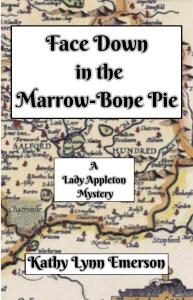
The book that started it all
That first version illustrates another problem I noticed while rereading, a tendency to have my characters ask themselves questions. A lot of questions. In revising, I combined questions, especially when a string of them started with “And” or “Or” or “But,” or else revised sentences. Here’s an example.
First the original:
She assumed he would report anything said in his hearing by the French ambassador and his staff. Would he also provide Walsingham with the names of those English men and women who came to the embassy to worship? Rosamond hoped not.
Now the revision:
She assumed he would report anything said in his hearing by the French ambassador or his staff. She hoped he would not also provide Walsingham with the names of those English men and women who came to the embassy to worship.
Not everyone may agree that all this fussing and fixing was necessary, but it kept me busy and out of trouble, and it certainly took my mind off the real world while I was working on it.
The entire Face Down series (ten novels and a collection of short stories) is now available in trade paperback. The e-books of the novels that are currently available are still the old version (I’m working on getting them taken down so I can replace them, but it’s a slow process!). The e-book of the short stories (Lady Appleton’s World) has the updated text, as do the three e-book omnibus Face Down collections, cleverly titled One, Two, and Three. The three Mistress Jaffrey mysteries, featuring Lady Appleton’s foster daughter, Rosamond, as an amateur detective and sometime intelligence gatherer, are scheduled for release on March 6, April 3, and May 1, 2025 and will be available in trade paperback ($15.99) and e-book ($5.99) editions. You can tell the new versions from the originals by the covers. All the new ones have maps as background.

Kathy Lynn Emerson/Kaitlyn Dunnett has had sixty-four books traditionally published and has self published others. She won the Agatha Award and was an Anthony and Macavity finalist for best mystery nonfiction of 2008 for How to Write Killer Historical Mysteries and was an Agatha Award finalist in 2015 in the best mystery short story category. In 2023 she won the Lea Wait Award for “excellence and achievement” from the Maine Writers and Publishers Alliance. She was the Malice Domestic Guest of Honor in 2014. She is currently working on creating new editions of her backlist titles. Her website is www.KathyLynnEmerson.com.
February 28, 2025
Weekend Update: March 1-2, 2025
 Next week at Maine Crime Writers there will be posts by Kaitlyn Dunnett/Kathy Lynn Emerson (Monday), Kate Flora (Tuesday), Brenda Buchanan (Thursday) and John Clark (Friday).
Next week at Maine Crime Writers there will be posts by Kaitlyn Dunnett/Kathy Lynn Emerson (Monday), Kate Flora (Tuesday), Brenda Buchanan (Thursday) and John Clark (Friday).
In the news department, here’s what’s happening with some of us who blog regularly at Maine Crime Writers:
Matt Cost is busy scheduling his book tour for the spring release of The Not So Merry Adventures of Max Creed. If you are part of a library, bookstore, or other organization that would like me to visit and give a COST TALK, please reach out to me. I am currently booking dates from May to November. My email is matthew-cost@comcast.net.
An invitation to readers of this blog: Do you have news relating to Maine, Crime, or Writing? We’d love to hear from you. Just comment below to share.
And a reminder: If your library, school, or organization is looking for a speaker, we are often available to talk about the writing process, research, where we get our ideas, and other mysteries of the business, along with the very popular “Making a Mystery” with audience participation, and “Casting Call: How We Staff Our Mysteries.” We also do programs on Zoom. Contact Kate Flora
February 27, 2025
Working the Muse? Or Letting it Work You.
I always thought of myself as a workmanlike writer, someone who gets his work done by putting butt in chair, words on paper, doing daily labor. My heroes were writers like Robert Parker, who died at his desk, and John D. MacDonald, who took his writing as a full-time job, nine to five, seven days. I measure myself by goals: time at the desk, pages committed, progress toward the whole. When I gave up writing poetry, I also abandoned the idea that the muse  would descend into my atelier and kiss me on the cheek to get me started.
would descend into my atelier and kiss me on the cheek to get me started.
So why did Rick Rubin’s book on creativity, The Creative Act, ring such a loud bell for me?
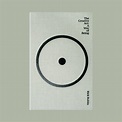 The Creative Act is a compendium of Rubin’s thinking and experiences in getting his own work done: helping musical artists produce their best work. The book collects homilies and aphorism, many of which are tinged with a Western interpretation of Buddhist concepts, like beginner’s mind. They talk of tapping into the universe, opening yourself to inspiration, engaging with a creative consciousness. Some samples:
The Creative Act is a compendium of Rubin’s thinking and experiences in getting his own work done: helping musical artists produce their best work. The book collects homilies and aphorism, many of which are tinged with a Western interpretation of Buddhist concepts, like beginner’s mind. They talk of tapping into the universe, opening yourself to inspiration, engaging with a creative consciousness. Some samples:
The person who makes something today isn’t the same person who returns to the work tomorrow.
Talent is the ability to let ideas manifest themselves through you.
It’s helpful to work as if the project you’re engaged in is bigger than you.
I came to the book with skepticism, not sure how tapping into what Rubin  was talking about might facilitate my desire to tell good stories. But as I took in some of his ideas (and discarded others), I started to feel as if I might be leaving something out of my writing by focusing so completely on only the things I could control: number of words, hours in the chair. It felt like the height of egotism to believe I understood everything about how I did my work.
was talking about might facilitate my desire to tell good stories. But as I took in some of his ideas (and discarded others), I started to feel as if I might be leaving something out of my writing by focusing so completely on only the things I could control: number of words, hours in the chair. It felt like the height of egotism to believe I understood everything about how I did my work.
Because while the work is always the work, the idea, the breath behind it has to come from somewhere. And even if you believe you generate the work in the writing itself, how do you look at that process as anything but magic?
There is a great body of material in the world, books, videos, courses, around making people writers, helping them get their stories into the world. I would never downgrade any kind of help, but most of what’s available seems to be rational strategies: making time to write, addressing your weaknesses, editing, structuring, etc.
What I think we forget, and maybe this is especially true for writers who’ve been working at it a while, is the joy in the parts of the work we can’t control or understand, the new idea, the unexpected twist in a story, a character doing something we didn’t see coming. What we do has resonance outside our consciousness of the process, and this is what Rubin’s book brought back to me. No matter how you write, it’s never an entirely rational process and the more we remember that, maybe the better it gets.
Beware the Location by Kait Carson
 I love reading books with a strong sense of place. Last week our own Rob Kelley blogged about the importance of place, real and imagined, in novels. You can read his blog here in case you missed it. Rob’s blog got me to thinking. Location is a two-edged sword.
I love reading books with a strong sense of place. Last week our own Rob Kelley blogged about the importance of place, real and imagined, in novels. You can read his blog here in case you missed it. Rob’s blog got me to thinking. Location is a two-edged sword.
There is something marvelous about reading a novel set in an actual place that references true to life locations. I no longer remember the novel, but I remember the mental high-five I gave the author for the spot-on mention of Tobacco Road. It anchored the book in my heart and let me revisit a special time in my life. It didn’t matter that the mention was passing or that other locations were figments of the author’s imagination. I was on board and bringing my history into the story. Hard to go wrong with that. As a caveat, if you’re a mystery writer, it’s best not to set a murder in a going concern. Caveat number two. If you’re a really famous writer, it probably won’t matter. The free publicity will soften the blow.

Inspiration for the figurehead at the Petard
My early two novels, now long out of print, were set in Miami-Dade County, Florida. The stories depicted a fictionalized version of the suburb where I lived. The real life village was tiny. Only 3,000 residents and no businesses. I plundered favorite houses and settings with abandon, but the characters, and events, were one hundred percent fictional. The third novel in this series taught me to beware the location.
When I worked recovery after Hurricane Andrew, I’d discovered an area populated by what can only be termed UFO houses. These round, squat, homes sat in the middle of nowhere, surrounded by fields and tropical vegetation. Unlike the rest of the hard-hit Homestead, Florida, area, they’d survived the hurricane without damage. There were all sorts of stories about the development. Locals called it a compound. The homes occupied by the members of a single family. Old-timers told tales of cages filled with zoo animals who occasionally escaped. The place fascinated me.
When the time came to write the third Catherine Swope mystery, the compound, now abandoned and in disrepair, played a prominent role. I am not a fast writer, and by the time I finished the book, I no longer lived in Florida. I asked a friend to visit the site and send me photos for marketing. She emailed me pictures of vacant lots. The houses that played an integral part of my story were gone. Victims of the wrecking ball to make way for McMansions. The novel became a victim of progress. The setting was too important to the story, leaving me with few options for revision. I visit it under my bed from time to time, but I know I’ll never rewrite it.
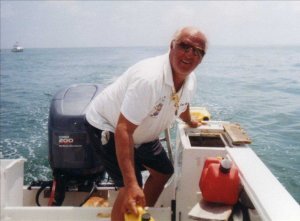
Banny “Cappy” Thorne
The experience taught me to beware using actual locations, especially in a Florida setting, where history has little value. The Hayden Kent mysteries are set in the Florida Keys. Islamorada, Marathon, and Key West are real cities. The Petard, Marathon Marina, and the Sea Farer Resort, all locations necessary to the plot, are fictitious. Cappy though, he’s real, right down to his rooty beer addiction. When I asked him if I could include a barely fictionalized version of the original, his only request was that I be kind to the old man. It was a promise easy to keep. We lost him in August 2023. I’m dedicating Death by Deception, my current WIP, to him.
Image of UFO houses above were created with Canva A/I. Images of the original houses exist online, but copywrite information was not available.
February 24, 2025
Welcome Yourself Back Into Your Writing
Sandra Neily here:
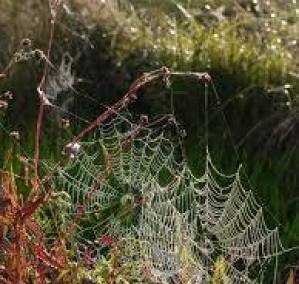
Cobwebs may happen after a break from the page.
The challenge! After a long break, how to reenter a manuscript? (Or a report or anything that’s been sitting for a while.)
How to re-engage with the original urge to tell a particular story?
I use several devices to bring myself “home” to a manuscript. I read it out loud. Sometimes I have my computer’s read function read it to me. I call a friend and read over a passage and ask for feedback and then there’s my Essential Note Library.
When I have been away from writing for a while, I visit notes I left that are designed to bring me home to the writing. (I rework and update my library often and keep it on the first page of whatever I’m creating. If I have to leave the project for a while, I take some time to first leave a trail of engaging notes and questions to welcome me back.)
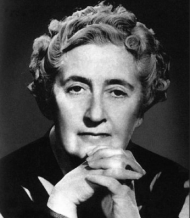
Agatha Christie looking wisely at us.
Some library notes, like this Agatha Christie quote, offer me and my ageing narrator wisdom. “As life goes on it becomes tiring to keep up the character you invented for yourself, and so you relapse into individuality and become more like yourself every day.”
me: Hahaha…for sure! It really is about character, character, character.
Some notes remind me of helpful research that’s waiting to be rediscovered.
Some are quotations I might want for an epigraph before the story starts. Epigraphs telescope the writing down to a powerful essence.
Some notes are plot and character reminders or notes to emphasize central themes.
Some are bits of my previous mysteries or writings that I slide in to echo backstory or character and retain the series voice. (And also my current murder victim leaves a journal with pithy quotes from his previous adventures with my narrator.)
My Essential Note Library pulls me into the writing, but it also illuminates creative directions and tasks I want to tackle.
I’ve fixed up some notes to share with you here. But first, here’s my most recent ‘didn’t write’ excuse.
It seems my granddaughters decided that “fiction” was what they would write when they spent vacation days with me. My office usually looks solitary  but this week it was filled with budding authors. Isn’t that grand!
but this week it was filled with budding authors. Isn’t that grand!

******************
Stuff from my Essential Note Library
Research:
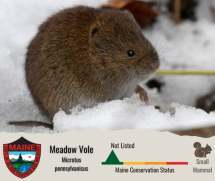 Subnivean zone: small rodents like voles tunnel through and underneath the snow to avoid predators. Doesn’t stop ermines! They are slender enough to hunt in their prey’s tunnels. The unique habitat between the ground and the base of the snow is referred to as the subnivean zone …
Subnivean zone: small rodents like voles tunnel through and underneath the snow to avoid predators. Doesn’t stop ermines! They are slender enough to hunt in their prey’s tunnels. The unique habitat between the ground and the base of the snow is referred to as the subnivean zone …
Rivers Reborn: Alewives Fish Make a Recovery in Maine (nature.org) replacing culverts on roads that have small culverts preventing fish passage: upstream pools can grow warm and discourage fish.
Grief of lost places; mourning. Iceland holds funeral for the loss of its first glacier.
Home – Good Grief Network climate grief aid site
 Game warden saves loon trapped on snow.
Game warden saves loon trapped on snow.
Discover status of ME Land Back movement. Nationally, indigenous people control 80% of conserved land. How the Winnemem Winto won their ancestral land back and help save Chinook Salmon – Vox
Possible Epigraphs:
“… If wilderness is outlawed, only outlaws can save wilderness. … God bless America. Let’s save some of it.” Edward Abbey
“Grief dares us to love once more.” Terry Tempest Williams, “Refuge”
Plot & Character Reminders:
Wildlife Trafficking: Suggest the crime even earlier. Stockdale says to Patton: “Turns out when big numbers of animals are illegally trafficked out of the country, the feds wonder if unusual pockets of species decline might signal bad actors at work. You’re good at noticing what’s not right in the woods, so I might also hire you for that.”
Newcomer/Outsider Ignorance: People who buy into the woods who’ve never lived up there don’t know what’s already been lost; like people without cancer cannot know what losses have arrived, even after treatment.
Cancer & House Lots: Both ASSAULT something essentially whole. The forest. The body.
Can Pock (dog) sniff out salamanders after his previous work to find dead birds and bats? He likes “moving things.”
Character arc: Patton: 1, steps outside law. 2, Accepts the misfit grapevine, outlaw employment gig. 3. Accepts LOSS (cancer, wild world). But what about her grief?
Don’t forget: return of hair spray; Patton & chocolate; get inside animals’ thoughts (chained beaver in #1); THE POWER OF MENACE. Cassandra myth reappears (no one listens). Vernal pool locations have GPS coordinates hacked.
Repeat what the narrator thinks/said previously in series?
What else could bring two people together who were so very different? An ache in the back of my throat answered before the words lined up in a clear sentence. We both believed the wild world would heal us if we needed healing.
I like to find the vulnerability in people and go after them before they have time to regroup.
I took strange comfort in knowing and seeing what others did not or refused to see.
 “… wild animal health depends on our setting up the outdoors as a zoo—a zoo without bars. I know it’s a contradiction, but today no animal can be free until we accept responsibility for its freedom … Human hands are all over wild, but then we have to step back and let wild ones be what they are”
“… wild animal health depends on our setting up the outdoors as a zoo—a zoo without bars. I know it’s a contradiction, but today no animal can be free until we accept responsibility for its freedom … Human hands are all over wild, but then we have to step back and let wild ones be what they are”
… moving through woods is a healing activity …
Dear Readers, what strategies do you use? (Well, putting one’s butt in chair seems to be pretty universal …)
Sandy’s debut novel, “Deadly Trespass, A Mystery in Maine” won a national Mystery Writers of America award, was a finalist in the Women’s Fiction Writers Association “Rising Star” contest, and was a finalist for a Maine Literary Award. The second Mystery in Maine, “Deadly Turn,” was published in 2021. Her third “Deadly” is due out in 2025. Find her novels at all Shermans Books (Maine) and on Amazon. Find more info on Sandy’s website.
won a national Mystery Writers of America award, was a finalist in the Women’s Fiction Writers Association “Rising Star” contest, and was a finalist for a Maine Literary Award. The second Mystery in Maine, “Deadly Turn,” was published in 2021. Her third “Deadly” is due out in 2025. Find her novels at all Shermans Books (Maine) and on Amazon. Find more info on Sandy’s website.
February 21, 2025
Weekend Update: February 22-23, 2025
 Next week at Maine Crime Writers there will be posts by Maureen Milliken (Monday), Sandra Neily (Tuesday), Kait Carson (Thursday) and Dick Cass (Friday).
Next week at Maine Crime Writers there will be posts by Maureen Milliken (Monday), Sandra Neily (Tuesday), Kait Carson (Thursday) and Dick Cass (Friday).
In the news department, here’s what’s happening with some of us who blog regularly at Maine Crime Writers:
Matt Cost has signed a contract for a new three-book series. 1955 is a historical mystery set in that year in Raleigh, North Carolina. When PI Jazz Jones is hired by NAACP rep, January Queen, to investigate the murder of a young Black man, the seedy underbelly of kickback to recent Civil Rights legislation is peeled back layer by layer to reveal something so insidious and dangerous that nobody is safe.
An invitation to readers of this blog: Do you have news relating to Maine, Crime, or Writing? We’d love to hear from you. Just comment below to share.
And a reminder: If your library, school, or organization is looking for a speaker, we are often available to talk about the writing process, research, where we get our ideas, and other mysteries of the business, along with the very popular “Making a Mystery” with audience participation, and “Casting Call: How We Staff Our Mysteries.” We also do programs on Zoom. Contact Kate Flora
The Back and Forth of Storytelling
Kate Flora: Starting a new book in a long-running series is like getting together with old friends not seen for a while. That’s where I am right now. I’m only about four chapters into the next Thea Kozak mystery, Until Death Do Us Part, but it already feels like home. It also feels like a lesson in mystery writing in practically every sentence.
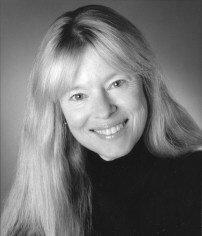
A much younger me
Although I do some planning before I start, much of the process of writing is like reading a good book, one I can’t wait to return to so I can see what happens next. But while I have an idea of where I’m going, thirty years in the writer’s chair means that I have an array of editor’s heads perched on my shoulders, whispering advice in my ears.
I open with Thea watching her small son Mason toddling across the floor. But of course there will always be new readers who don’t know Thea or haven’t followed her through the previous eleven books and don’t know who Thea is or the story of Mason’s birth. So the progress of this book is: write a few sentences. Pause. Go back and edit those sentence to make clear to the reader who the characters are and a small bit of backstory.
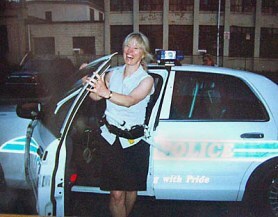
Learning about cops in a citizen’s police academy
I write a few more sentences. The nanny is sick. Thea is trying to finish a report for a difficult client because Suzanne is sick with the flu. Oh. Must stop again and explain a bit about what Thea does. Who Suzanne is. And then, only a few more sentences on, when there is a knock on the door, Dom and Rosie Florio are on the doorstep, and I need to put in a teeny explanation about how Thea knows them.
Whew! Now maybe I can get down to the writing the story. The phone has been ringing, and when Thea checks her messages, things get instantly complicated. There has been a homicide at a client school, and Thea, as her firm’s crisis specialist for private schools, needs to get to the campus as soon as possible to help them deal with a terrible situation. But: no nanny. Her husband the homicide detective is working a case. And a client is waiting for a report. Have I created enough tension yet?
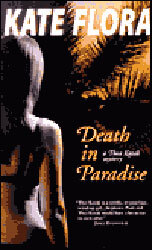
Mass Market Paperback
Then there are those on-going questions: have I created a situation that will draw readers into the story? Have I developed the characters enough to give readers a reason to want to spend time with them? And I including enough detail to give a sense of place, a sense of why any of this matters, a sense of time passing and pressure increasing? And I mustn’t forget the new source of tension for Thea, who has always been free to head off and troubleshoot her client’s problems: who will care for her toddler son, and how will she handle her first overnight separation while also dealing with distraught staff at the client school and all the details of managing a fraught situation?
Sometimes it all flows organically from the initial idea. More often, the process is like the one for this book. I start with a campus crisis where a headmaster has been killed and see what evolves. I write something. Ponder on it. Go back and add some more detail. Saying that the headmaster has been shot isn’t very detailed. Saying that after there is a gunshot, his wife comes out of his office holding a gun and says “he’s dead,” gives more detail to pull us into the story and raises more questions. Did she shoot him? Saying that she then set down the gun and now has disappeared adds yet another question to the story. Why did she run and where has she gone?

yes, it often feels like being perched on a rock in midstream but we always make it across.
But still I have the question: have I done enough to make the murder feel mysterious and urgent? Have I given the kind of detail that will show the acting headmaster’s shock? I go back and describe his voice on the phone, in the voice message he’s left. Then, when Thea speaks with him, he provides another graphic detail: the dead headmaster has been shot in the face. There’s blood everywhere and it’s horrible. This allows the reader more information but also allows Thea to understand how traumatized he is and compare it to her own unfortunate experience with other dead bodies.
I’m only four chapters in, and already I’ve done a lot of rewriting. Those editing heads that sit on my shoulders have been very busy, and I expect they’re going to be sitting there for the whole book. Maybe they’ve missed Thea and Andre too? As for constantly having to go back and edit myself? I’m loving it. I’m enjoying watching greater details emerge, and small things happen that may become important later. I’m enjoying watching the dynamics among the characters. Who will be easy to work with; who will be difficult. Who is open and helpful; who appears to be hiding something. And always I’m keeping an eye on that central question: Why was someone killed and what are the ripples through the community.
Welcome to Crime Fiction 101: storytelling, details, pacing, tension, character development. Have I set the hook and raised enough questions in my readers’ minds to keep them turning the pages. Then, as the book develops, another overarching question will emerge: What is this story about and what do I want my readers to take away.
February 19, 2025
The Joys of Upgrading
Kaitlyn Dunnett/Kathy Lynn Emerson here, today sharing the “joys” of upgrading from my fifteen-year-old pc to a new laptop.

current set up
I didn’t want to do it, but there were two arguments in favor. One, of course, was that my husband’s pc, acquired at the same time as mine, died about a year ago, so it’s only a matter of time before mine goes belly up. The other is that it’s pretty certain the cost of all things tech is going to skyrocket thanks to new tariffs, and by acting now I could get a laptop almost like the one he bought for almost $200 less than what he paid. Sounds like a good deal, right?
I admit it. I’m a dinosaur. I’ve never stopped using Word 97-2003 for my writing. Long ago I learned that switching to a newer version will always drive me a little crazy trying to locate common functions like find and replace and where to change curly quotes into straight quotes.
I am seriously techno-challenged.

first computer–a Tandy 1000
That said, the fear of having my pc crash, even with all my files religiously backed up on multiple flash drives, was enough to make me acquire the laptop. Fortunately, the husband took care of the set up. He did most of it when I wasn’t home—smart man! Most files seem to have transferred. Not my photos for some reason, but I can do that from a flash drive. And of course, as expected, a few of my older programs, like Family Tree Maker, will no longer work. That’s okay. I long ago transferred all the info into .doc files.
There were, however, a few things I hadn’t counted on. One was needing a second subscription for Microsoft for this device. Another was the fact that my reliable LaserJet printer, acquired at the same time as the old pc, will not work with the new laptop. We have another printer that will, but (wouldn’t you know?) I bought a complete set of very expensive HP ink cartridges just last month, since the ones in the printer were getting low. “Had I but known,” as the saying goes.

new laptop in temporary location
My plan, such as it is, is to keep working on my current writing project (editing the three Mistress Jaffrey Mysteries to reissue in POD and e-book) on the old pc for as long as it keeps working while at the same time (slowly) learning my way around the new laptop. When the time comes, I’ll have to do some reorganizing in my office, too, since it’s currently set up for a certain size monitor, keyboard, etc. I’m NOT thinking about that just yet.

Shadow’s solution to both cold weather and techo-frustrations
This is all good. I keep telling myself that. I’ll figure it all out eventually and get used to working in the updated Word and on a new keyboard.
Right now, though, the best thing about the process, even the hassle of it, is that it helps take my mind off all the other unwelcome changes going on around us. This year, that’s not a bad thing at all.

Kathy Lynn Emerson/Kaitlyn Dunnett has had sixty-four books traditionally published and has self published others. She won the Agatha Award and was an Anthony and Macavity finalist for best mystery nonfiction of 2008 for How to Write Killer Historical Mysteries and was an Agatha Award finalist in 2015 in the best mystery short story category. In 2023 she won the Lea Wait Award for “excellence and achievement” from the Maine Writers and Publishers Alliance. She was the Malice Domestic Guest of Honor in 2014. She is currently working on creating new editions of her backlist titles. Her website is www.KathyLynnEmerson.com.
February 18, 2025
Meaning in Books by Matt Cost
I believe in writing and reading books that there must be more meat to the pages than just a diversion from our everyday lives. This is not to say that this is how every writer and reader should think. Books are a personal experience and should be treated as such. What tickles your fancy is what matters.
More meat to the pages can mean many things. In my viewpoint, I want to make a profound social statement or create a fascinating educational component that broadens my horizons. If I’m going to spend a year getting a book researched, written, edited, marketed, and promoted, then the thing is going to have to hold my interest.
In my own books, social commentary tinges many of my plots, characters, and settings. These have ranged from the fight for social and political equality in 1870s New Orleans, over to Cuba for the revolution led by Fidel Castro in the 1950s, and tothe radically charged events of the Covid epidemic.

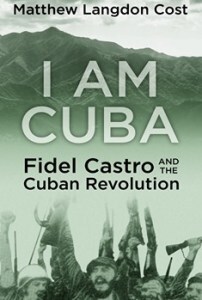
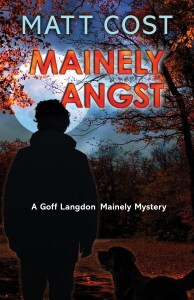
My educational components (for me as well as you) include acquiring knowledge about topics as diverse as nuclear power plants, the Civil War, cults, powerful lobbyist groups, genome editing, and unidentified aerial phenomena, just to name a few.
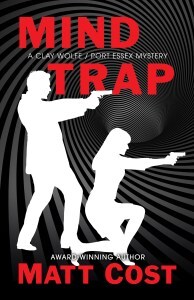
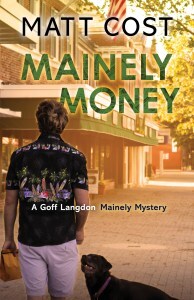
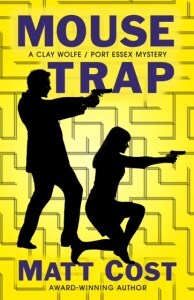
This April, I have the first in a new series, this time more of a thriller, that delves into what I hope is a profound social statement. The Not So Merry Adventures of Max Creed is a modern-day Robin Hood story where Max and his band of people fight for justice for those who have been wronged by the ultra-rich.
Max Creed is not taking aim at any one individual but is making a broader statement that the United States justice system has failed us regarding individuals and corporations worth billions of dollars. There are multiple levels of what justice means in this country. The poor have one set, people of color another, the billionaires are a law-free zone, and countless other niches in between all of these.
Don’t tell anybody, as I have not yet made it public knowledge, but I recently signed a new contract with Level Best Books for another three-book series. The first one is tentatively titled 1955: A Jazz Jones Mystery. It is set in the year of the title and takes on Civil Rights in Raleigh, North Carolina. This mixes educational components with strong social statements.
When a young Black man is hung, and his friend disappears, the NACCP sends a representative to investigate. January Queen hires private investigator, Jazz Jones, to uncover the latent racism which has reared its ugly head in the wake of the recent Brown vs Board of Education ruling. This backlash against change, progress, inclusion, and equality is something that is important to understand then, as it affects now.
At some point in my evolution of understanding history, I realized that history could be fun. As a 7th and 8th grade social studies teacher, I always tried to find that balance between educational and entertaining. Nobody wants to chew their way through countless dates and events that have no flesh to them.
I hope that readers will find these two new series of mine to be informative, worth contemplation, and entertaining.
What say you, readers of this blog. How do you like your books served?

About the author
Matt Cost was a history major at Trinity College. He owned a mystery bookstore, a video store, and a gym, before serving a ten-year sentence as a junior high school teacher. In 2014 he was released and began writing. And that’s what he does. He writes histories and mysteries.
Cost has published six books in the Mainely Mystery series, starting with Mainely Power. He has also published five books in the Clay Wolfe Trap series, starting with Wolfe Trap. And finally, there are two books in the Brooklyn 8 Ballo series, starting with Velma Gone Awry. For historical novels, Cost has published At Every Hazard and its sequel, Love in a Time of Hate, as well as I am Cuba.
Cost now lives in Brunswick, Maine, with his wife, Harper. There are four grown children: Brittany, Pearson, Miranda, and Ryan. They have been replaced in the home with four dogs. Cost now spends his days at the computer, writing.
February 16, 2025
A Sense of Place
 Rob Kelley here, thinking about place detail in fiction. Dan Brown, whose book The Da Vinci Code has inspired numerous Paris tours, also changes several physical details about The Louvre to serve his plot (adding a window in the bathroom from which to escape the police, for example), and some readers have fussed over it.
Rob Kelley here, thinking about place detail in fiction. Dan Brown, whose book The Da Vinci Code has inspired numerous Paris tours, also changes several physical details about The Louvre to serve his plot (adding a window in the bathroom from which to escape the police, for example), and some readers have fussed over it.
But why do we care?
I was chatting with a reader recently about the city of Boston in fiction and how as a resident of Boston and its suburbs, details about the city really hit home with her. I think there are two versions of settings that really grab readers. The first is the fantastic and/or exotic. In Arkady Martine’s Hugo award winning A Memory Called Empire we see the imperial planet of Teixcalaan, the “Jewel of the World,” through the eyes of a new ambassador. All of its glory is overwhelming to the protagonist, who must navigate political intrigue in a world she does not know. One of the top contenders for my absolute favorite novel of all time, Invisible Cities by Italo Calvino, uses Marco Polo as a narrator to describe to Kublai Khan cities he has seen in his travels, each more fantastic than the rest, in what almost feels like an explorer’s version of A Thousand and One Nights. Or Jules Verne’s novels such as Journey to the Center of the Earth, which stretch out the last golden years of exploration. But by we’ve now visited all the lands of the earth, so we look to the oceans and space for more new and fascinating places to set our stories.
The second version, the one that I’m more interested in as an author, are novels set in actual places in specific times (though, yes, I have an SF story outline set in space that I’ve been fooling around with for years. Maybe more on that in another post!). My first two novels are set in Cambridge and Boston.  The first is set in Boston in 1990, the second in the present day. Raven (High Frequency Press, 2025), the first novel, features long lost places in Cambridge: the Wursthaus, the Tasty, and the Manray (recently reopened at a new location after 20 years!). Obviously for me as an author, and for readers who know Cambridge and Boston, the nods to landmarks, especially those known to college and graduate students at Harvard and MIT at the time, will be fun reminders. But also relevant are the things not present. No Big Dig, just the old ugly Expressway blotting out daylight to parts of the North End for decades until it was brought down.
The first is set in Boston in 1990, the second in the present day. Raven (High Frequency Press, 2025), the first novel, features long lost places in Cambridge: the Wursthaus, the Tasty, and the Manray (recently reopened at a new location after 20 years!). Obviously for me as an author, and for readers who know Cambridge and Boston, the nods to landmarks, especially those known to college and graduate students at Harvard and MIT at the time, will be fun reminders. But also relevant are the things not present. No Big Dig, just the old ugly Expressway blotting out daylight to parts of the North End for decades until it was brought down.

Robin Lubbock/WBUR
In my second novel, Critical State (High Frequency Press, 2026), we have the Boston of today, with surveillance cameras on power poles, “The Embrace” in the Boston Common, and the leaky beautiful/ugly Stata Center replacing the infamous World War 2 Building 20 between the time of my first and second book.
While there are writers currently working who do Boston just right–Dennis Lehane, Hank Phillippi Ryan, Joseph Finder, and many others–I think we all look back to Robert B. Parker, whose private eye Spenser wanders the city from the 1970’s to the 2000’s, observing Boston and its residents with a critical eye. One of the joys of reading his work is observing the evolution of our second favorite character after Spenser: Boston itself.
My third book remains in New England but comes closer to home. Set in the fictional town of Bedford, Maine, this story draws from many small Maine towns I know well, much as Stephen King’s Castle Rock or Tess Gerritsen’s Purity do. I confess, I find it more challenging to create a fictional place that seems real than to narrate a fictional narrative in a real place, making something fictional familiar.
What are some of your favorite locations in novels, places real or imagined?
Lea Wait's Blog
- Lea Wait's profile
- 508 followers



